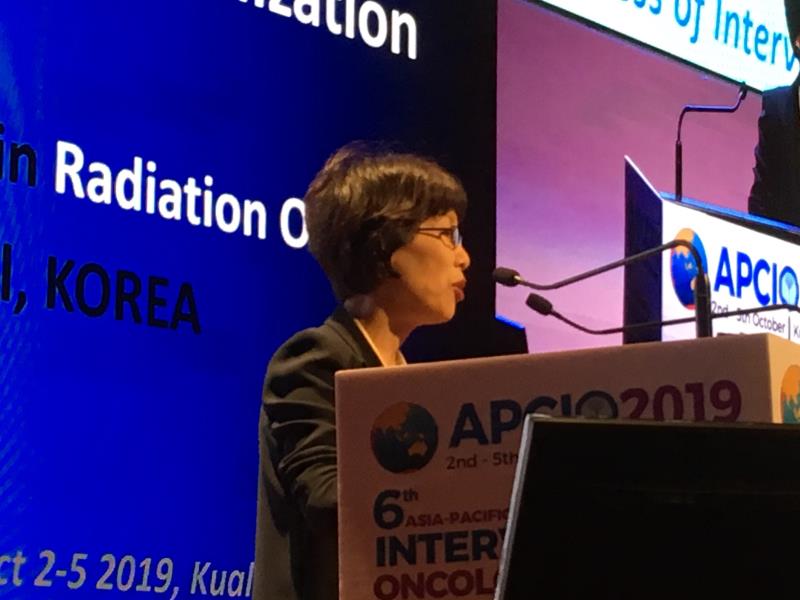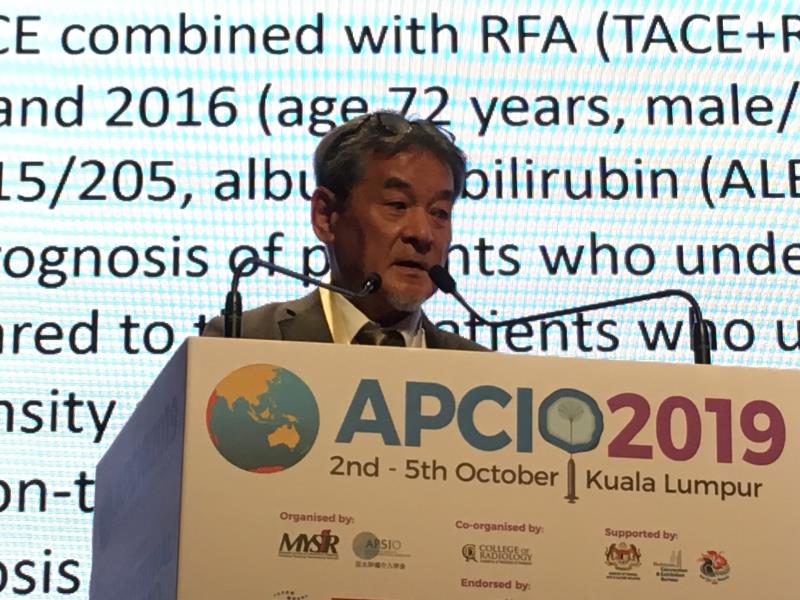 Professor Dr Jinsil Seong
Professor Dr Jinsil SeongThe addition of radiofrequency ablation (RFA) or high-dose radiotherapy (RT) to accompany transcatheter arterial chemoembolization (TACE) may improve the overall survival rates of patients with hepatocellular carcinoma (HCC) versus TACE alone.
“As a treatment for HCC, TACE is effective but has its limitations,” said Professor Dr Jinsil Seong, president of the Asia-Pacific Primary Liver Cancer Expert (APPLE) Association and professor of radiology at Yonsei University College of Medicine, Seoul, South Korea. “TACE is frequently incomplete in tumours smaller than 5 cm; in larger tumours, it can cause hypoxia and hypoxia-inducible factor (HIF)-1a production, which can convert tumours into more aggressive and invasive forms.”
Speaking at a joint symposium of APPLE, the Asia-Pacific Association for the Study of the Liver (APASL), and the Asia-Pacific Congress of Interventional Oncology (APCIO) recently held in Kuala Lumpur, Seong highlighted a recent study conducted by her team which examined the effectiveness of dose-escalated RT in patients with HCC after incomplete TACE. [Strahlenther Onkol 2019; doi:10.1007/s00066-019-01488-9]
In the retrospective study, which enrolled 323 patients receiving treatment between 2001 and 2016, the researchers found that patients who received higher doses of targeted radiation had improved local 1-year failure-free rates (LFFR) and 1-year progression-free rates (PFR) compared to those receiving lower doses (biologically effective dose, BED ≥72 Gy [n=62] vs <72 Gy [n=261]: 1‑year LFFR 94 vs 81 percent; p=0.002; 1‑year PFR 49 vs 42 percent, p=0.01).
Treatment-related toxicities were also similar between the two groups (classic radiation-induced liver disease: 5.3 vs 13.8 percent, p=0.08; grade 2–4 gastrointestinal bleeding: 3.2 vs 7.3 percent, p=0.39). Seong said that innovations in three-dimensional imaging, motion management, and targeted dosing in RT had enabled the delivery of more precise high-dose radiation to tumours while minimizing the volume of healthy tissue affected.
 Professor Dr Masatoshi Tanaka
Professor Dr Masatoshi TanakaIn the same session, Professor Dr Masatoshi Tanaka, director of the Hepatology and Clinical Research Center at Yokokura Hospital, Japan, presented data from another retrospective study comparing the effect of TACE and RFA (n=311) versus TACE alone (n=109) on survival in 420 patients with inoperable intermediate HCC (BCLC* stage A, n=215; stage B, n=205). [Hepatol Res 2019;49:919–928]
Tanaka noted that the overall survival rate of the TACE+RFA group was significantly higher than the TACE-only group (median survival time, MST: 57.9 vs 33.1 months, p<0.001). Stratification analysis by BCLC stage found that overall survival rates for the TACE+RFA group were also significantly higher when stratified by BCLC stage A (MST 57.9 vs 39.8 months, p=0.007) and B (MST 50.7 months vs 24.5 months, p=0.001).
“Decision tree analysis, after propensity score matching, demonstrated that TACE combined with RFA may prolong the survival of patients with unresectable HCC compared to TACE alone, especially in BCLC B1 stage HCC,” said Tanaka.